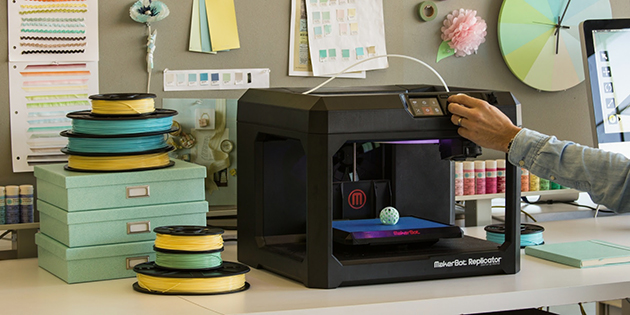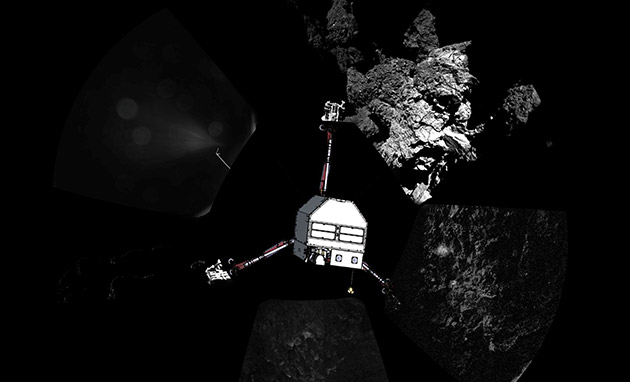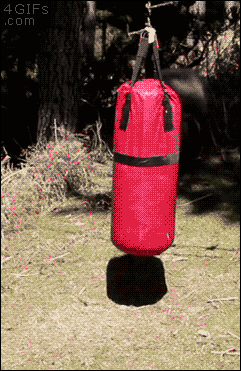 Spend enough time on the web and you're bound to come across TRUSTe's logo. It signifies that the site you're on -- like eBay, Yelp and Etsy -- self-certified with TRUSTe's set of membership requirements like the Children's Online Privacy Protection...
Spend enough time on the web and you're bound to come across TRUSTe's logo. It signifies that the site you're on -- like eBay, Yelp and Etsy -- self-certified with TRUSTe's set of membership requirements like the Children's Online Privacy Protection...
Cooper Griggs
Shared posts
Turns out TRUSTe isn't so trustworthy, settles FTC complaint
 Spend enough time on the web and you're bound to come across TRUSTe's logo. It signifies that the site you're on -- like eBay, Yelp and Etsy -- self-certified with TRUSTe's set of membership requirements like the Children's Online Privacy Protection...
Spend enough time on the web and you're bound to come across TRUSTe's logo. It signifies that the site you're on -- like eBay, Yelp and Etsy -- self-certified with TRUSTe's set of membership requirements like the Children's Online Privacy Protection...
NYC to replace most of its payphones with free gigabit WiFi in 2015
 Can you remember the last time you used a payphone? Neither can we. Public telephones are an outmoded piece of our communication infrastructure, and NYC is ready to replace them. The city has been toying with the idea for years, and today it finally...
Can you remember the last time you used a payphone? Neither can we. Public telephones are an outmoded piece of our communication infrastructure, and NYC is ready to replace them. The city has been toying with the idea for years, and today it finally...
Stunning Mosque In Iran Becomes A Magnificent Kaleidoscope When The Sun Rises
Cooper GriggsFantastic!
via lbstopher
The exterior of the Nasir al-Mulk Mosque in Shiraz, Iran, while decorative, hints only vaguely at the colorful splendour held within. When you step inside, especially if it’s early in the morning, the mosque truly becomes a vivid and glorious kaleidoscope.
The Nasir al-Mulk Mosque is heavily decorated with stained glass – something very rare in mosque architecture. It was built during the Qājār era by the order of Mirza Hasan Ali Nasir al Molk in 1888. The mosque is famous for its extensive usage of stained glass and the divine feast of colours that it casts with the help of the morning sun. The mosque is often referred to as the “Pink Mosque” due to the dominance of this colour in the intricate and colorful tiles decorating its arches and niches.
If you ever have a chance, go visit this majestic, one-of-a-kind mosque and don’t miss the earliest bus – you won’t regret it!
(via)

Image credits: Mohammad Reza Domiri Ganji

Image credits: Dav Wong

Image credits: Amin Abedini

Image credits: Marinela T. Gondii

Image credits: Lucie Debelkova

Image credits: Amin Abedini

Image credits: my2200

Image credits: Amin Abedini

Image credits: Abbas Arabzadeh

Image credits: my2200

Image credits: Amin Abedini

Image credits: Dav Wong
(via genderoftheday)
Cooper Griggs"What?"
Autonomous, human-sized security robots are almost here
Cooper GriggsLooks top heavy to me and easy to knock over with a car or maybe a couple fast people.
 You might not see quite so many security guards on the beat in the future. After roughly a year of work, Knightscope is almost ready to deploy the K5, a human-sized (5 feet tall) autonomous robot that's designed to take care of the more mundane parts...
You might not see quite so many security guards on the beat in the future. After roughly a year of work, Knightscope is almost ready to deploy the K5, a human-sized (5 feet tall) autonomous robot that's designed to take care of the more mundane parts...
US government wants $1.5 billion more per year to get schools online
Cooper GriggsCan you just take that from the defense budget please? k thx bye.
 The FCC isn't depending solely on help from tech companies to get more libraries and schools connected to the internet. According to the New York Times, agency chairman Tom Wheeler will propose that the FCC should have up to $1.5 billion more to...
The FCC isn't depending solely on help from tech companies to get more libraries and schools connected to the internet. According to the New York Times, agency chairman Tom Wheeler will propose that the FCC should have up to $1.5 billion more to...
MakerBot, Martha Stewart decorate parties with 3D-printed goods
 We've discussed the reasons for having a 3D printer handy at length, and now MakerBot is looking to help decorate for your next evening soirée. The company teamed up with Martha Stewart Living to create designs for the Trellis Collection of...
We've discussed the reasons for having a 3D printer handy at length, and now MakerBot is looking to help decorate for your next evening soirée. The company teamed up with Martha Stewart Living to create designs for the Trellis Collection of...
VFX Artist / Tittles (Graphic) at ogmafilms, Los Angeles
Cooper GriggsAre Tittles like Skittles titling? Or this some sort of adult thing I don't know about? Again.
Elizabethan Star Wars by Sacha GoldbergerPreviously: Elizabethan...
Cooper Griggsvia David Pelaez
Did a 5K today! #race #charity #specialolympics #ucla#usc...

Did a 5K today!
#race #charity #specialolympics #ucla#usc #losangeles #california (at UCLA)
Elizabethan Superheroes by Sacha GoldbergerPreviously: If...
Cooper Griggsvia David Pelaez
the bad news bruins successfully completed our 5k this morning....
Cooper GriggsThat's me in the green shirt. LOL, we look like we're photobombing the group.


the bad news bruins successfully completed our 5k this morning. many thanks to those who donated to support the special olympics!
How cannabis was used to shrink one of the most aggressive brain cancers
Cooper Griggsvia Bewarethewumpus

Widely proscribed around the world for its recreational uses, cannabis is being used in a number of different therapeutic ways to bring relief for severe medical conditions. Products using cannabinoids, the active components of the cannabis plant, have been licensed for medical use. Sativex, for example, which contains an equal mixture of the cannabinoids tetrahydrocannabinol (THC) and cannabidiol (CBD), is already licenced as a mouth spray for multiple sclerosis and in the US, dronabinol and nabilone are commercially available for treating cancer-related side effects.
Now, in a study published in Molecular Cancer Therapeutics, we’ve also shown that cannabinoids could play a role in treating one of the most aggressive cancers in adults.
There are more than 85 cannabinoids, which are known to bind to unique receptors in cells and which receive outside chemical signals. These receptors feed into signalling pathways, telling cells what to do. Recent studies have shown that some cannabinoids have potent anti-cancer action. For example, both THC and CBD have been shown in a number of laboratory studies to effectively induce cell death in tumour cells by modifying the faulty signalling pathways inside these cells. Depending on the cell type this can disrupt tumour growth or start to kill it.
The psychoactivity associated with some cannabinoids, principally THC (which gives people a cannabis high), is also mediated via the same receptors. Because these receptors are found in the highest abundances in brain cells, it follows that brain tumours also rich in these receptors may respond best to cannabinoids.
We wanted to investigate the anti-cancer effects of Sativex in glioma cells. High-grade glioma is an aggressive cancer, with very low long-term survival rates. Statistics show that just over a third (36%) of adult patients in the UK with glioma live for at least a year, while the five-year survival rate is 10%.
Depending on the individual, treatment can consist of surgery, radiotherapy, and/or chemotherapy with the drug temozolomide. However, due primarily to the intricate localisation of the tumour in the brain and its invasive behaviour, these treatments remain largely unsuccessful.
However, as our study showed, combining radiotherapy with cannabinoid treatment had a big effect.
Finding the right dose
We first had to perform lab tests on cells to optimise the doses of the cannabinoids, and showed that CBD and THC combined favourably.
We found that to achieve a 50% kill rate of glioma cells, a dose of 14mM (millimolar – a measure of amount-of-substance concentration) of CBD or 19mM of THC would be needed if each was used singularly. However, when used in combination, the concentrations required to achieve the same magnitude of cell kill is significantly reduced to just 7mM for each. This apparent reduction in the doses of the cannabinoids, in particular THC, without a loss of overall anti-cancer action is particularly attractive as unwanted side effects are also reduced.
Once we had these results, we then tested the impact of combining the cannabinoids with irradiation in mice with glioma. The efficacy of this treatment was tracked using sophisticated MRI technology – and we determined the effects on tumour growth of either CBD and THC together, irradiation, or the combination of both. The drugs were used at suboptimal doses to allow us to see if there was any improvement in the therapy from combining them.
Balancing anti-cancer with psychoactive
In principle, patients treated with THC could experience some psychoactive activity. But the secret to successfully exploiting cannabinoids as a treatment for cancer is to balance the desired anti-cancer effects with the less desirable psychoactive effects. This is possible, as some cannabinoids seem to function independently of the receptors and so do not engage the adverse effects. CBD is one such cannabinoid. The doses of THC we selected were below the psychoactive level, but together with CBD it partnered well to give the best overall anti-cancer effect.
Our results showed that the dose of irradiation we used had no dramatic effect on tumour growth, whereas CBD and THC administered together marginally reduced tumour progression. However, combining the cannabinoids with irradiation further impeded the rate at which tumour growth progressed and was virtually stagnant throughout the course of the treatment. Correspondingly, tumour sizes on the final day of the study were significantly smaller in these subjects compared with any of the others.
The results are promising. There may be other applications but for now it could provide a way of breaking through glioma and saving more lives.
Wai Liu receives funding from GW Pharmaceuticals.
US Navy puts its first laser weapon into service
Cooper Griggsfreakin' lasers
 It's official: the US Navy has entered the future. Vice Admiral John Miller tells Bloomberg that the USS Ponce, an amphibious transport, has been using the Navy's Laser Weapon System (LaWS) in the Persian Gulf since late August. The high-tech arsenal...
It's official: the US Navy has entered the future. Vice Admiral John Miller tells Bloomberg that the USS Ponce, an amphibious transport, has been using the Navy's Laser Weapon System (LaWS) in the Persian Gulf since late August. The high-tech arsenal...
Sweet dreams, Philae: ESA's lander goes to sleep in the absence of sunlight
Cooper Griggsbummer
 ESA's comet lander Philae has ran out of batteries and gone to sleep at 7:30PM on November 14th, 2014. It was supposed to harness solar energy to continue its operations, but it unfortunately bounced twice during touchdown and settled in the shade....
ESA's comet lander Philae has ran out of batteries and gone to sleep at 7:30PM on November 14th, 2014. It was supposed to harness solar energy to continue its operations, but it unfortunately bounced twice during touchdown and settled in the shade....




































